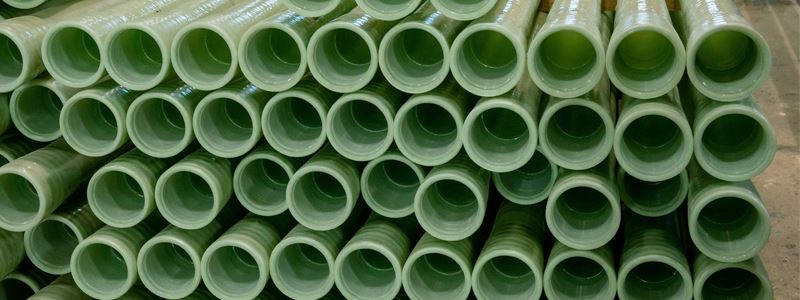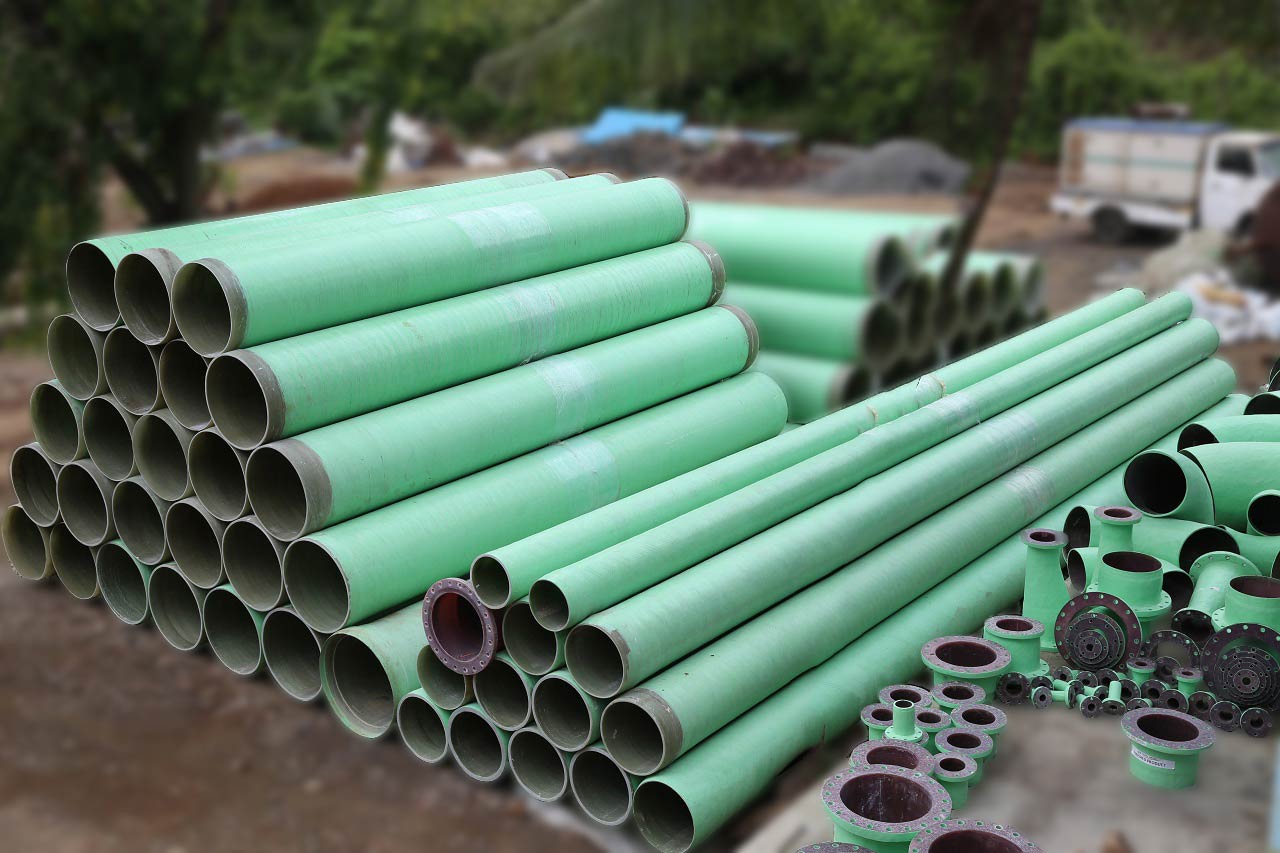Welcome
WINTEC LLP
is a subsidiary of Wintec LLP.
having more than 16 vears experience in composite field and it is located few kilometers from
Chennai Metropolitan area and adjacent to Chennai Outer Rina Road. Along with Manufacturing.
Wintec LLP also offers Installation and Commissioning services of GRP/FRP Pipes.
Wintec LLP is well known for FRP/GRP products in southern states of India for its quality products. We are specialized in producing FRPIGRP pipes and fitings by adopting various Indian and International standards,.
Wintec LLP has a dedicated lab for checking quality pipes and raw materials. We perform various checks from Hardness Barcol to Tensil Strengths
The core values of our company are to provide on-time delivery of quality products to customers through technical services and provide excellent after sales service.
Manufacturing process:
Wintec LLP GRPIFRP pipes are manufactured by filament winding method. Filament winding method utilizes continuous glass
strand roving impregnated with suitable resin system by rotating mandrel al specified winding angle. This winding
process is continuous in bi-directional layers until desired thickness is achieved GRP PIPES & FITTINGS
FEATURES & ADVANTAGES OF GRP AS PIPING MATERIAL
By virtue of its superior material characteristics, GRP pipes have become the ultimate choice for replacing steel and concrete pipes for transporting different process fluids, sea water, raw water and potable water for different underground and aboveground applications. The single most reason why people go for GRP is the total corrosion resistance that this material offers. Well-engineered GRP pipelines can be totally forgotten after installation for its life period without cathodic protection or periodic maintenance and for this reason, GRP pipelines are called as "ZERO-MAINTENANCE PIPING".
ABSOLUTELY CORROSION FREE:
The material is inert to any type of water (sea water, raw water, etc.) and for handling diferent process fluids, chemicals, acids etc. With suitable GRP resin system, pipes can be designed for handling all fluids. Wintec LLP Composite will advise customers on this based on their requirement. No coating. guniting. mortar lining or cathodic protection required with GRP piping.
SMOOTH INNER SURFACE:
The inner surface of pipes with minimum friction loss is a significant factor is deciding the power consumption and pumping cost. Unlike steel and other materials, GRP Pipes' inner surface remains smooth throughout its lifetime because there is no corrosion. Due to this, power consumption and pumping cost is very low in GRP in comparison to steel and other materials.
LONGER LIFE:
TGRP pipes are designed for 50 years of life for normal applications. For Off-shore applications, the design life is 20 years.
HIGH STRENGTH TO WEIGHT RATIO:
The high-strength to weight ratio of this material offers the advantage of weight reduction and due to this, it is easy to handle & transport and this aids faster installation. It is light in weight, 1/5th of Steel, 1 /8th of Cl and 1/10th of PSC for the same pressure rating and strength criterion.
RESISTANCE TO SURGE PRESSURE:
The water hammer in GRP pipe is less due to elasticity of GRP pipe. GRP pipes can withstand pressure up to 1.4 times of its pressure class in case of surge, which is higher than conventional pipes.
FREE OF MAINTENANCE:
GRP pipelines are vitually maintenance free after installation. In case of repair, it can be repaired at site easily without any necessity of heavy equipments.
GENERAL SPECIFICATIONS:
GRP PIPES & FITTINGS
CLASSIFICATION OF PIPES AND FITTINGS
Based on Nominal Diameter: Nominal size of pipe and fitting is based on internal diameter. The complete list of the available size produced by Wintec LLP Composite is given hereunder. The nominal diameters (in mm) are: 25, 40. 50. 80, 100, 150, 200, 250, 300, 350, 400, 450, 500, 600 and 650.
Based on Nominal Pressure Classes: Pipes and fittings are classified according to nominal pressure. Standard pressure classes (in bar) are 3, 6,9, 12, 15, 20, 25, 32 and 40. Intermediate or higher-pressure classes are considered depending on the design conditions.
Specific Pipe Stiffness Classes: Pipes are also classified according to pipe stiffness. Stiffness is the prime design criteria in the case of underground pipes. GRP pipe stiffness is classified into four classes, viz. A, B, C, D. and expressed as "pipe stiffness" as per ASTM, AWWA and IS standards in kPa. It is als0 expressed as "Specific Tangential Initial Stiffness as per BS 5480 & European norms, EN. Different stiffness classes are given below.
| GRP Pipe Stiffness Classes Pipe Class | A | B | C | D |
| Pipe Stiffness, Psi (kPa) | 9(62) | 18(124) | 36(248) | 72(496) |
| Specific Tangential Initial Stifness, N/m2 | 1250 | 2500 | 5000 | 10000 |
MATERIALS AND CONSTRUCTION:
Pipes are manufactured by the flament winding process using appropriate resin system to impregnate the strands of continuous glass filaments, which are wound around a mandrel at a pre determined angle of winding. The resin controls the corrosion resistance properties of the composite material system and hence the type of resin for a given application is selected for the service fluid. All pipes have a resin-rich corrosion barrier (liner) reinforced with C-Glass surface mat. The corrosion barrier has high resin content of at least 70%. The structural glass-fiber reinforcement for pipes and fittings shall be of E-Glass Rovings. GRP pipes exposed to sunlight (aboveground applications) are given a top resin coat that contains additives for UV-protection.
FLANGES AND FITTINGS:
All fittings are manufactured using the same type of materials as the pipe. Fittings are manufactured by contact moulding process. Flanges shall have ANSI B16.5 Class 150 bolt hole patterns.
Product Specifications
GOVERNING STANDARDS
The governing documents commonly used in specifying. testing and applying GRP piping are the following:
| AWWA C950 | American Water Works Association Standard for Fiberglass pressure pipe |
| ASTM D2996 | Standard Specificat1on for Filament-Wound "Fiberglass" (Glass-Fiber Reinforced Thermoseting-Resin) Pipe |
| BS 5480 | British Standard Specification for Glass reinforced plastics (GRP) pipes, joints and fittings for use for water supply or sewerage. |
| BS 7159 | Indian Standard for Design and construction of glass reinforced plastics (GRP) piping systems for individual plants or sites |
| IS 12709 | Indian Standard for Glass fiber Reinforced Plastics (GRP) Pipes, Joints and Fittings for use for Potable Water Supply |
| IS 14402 | Indian Standard for Glass fiber Reinforced Plastics (GRP) Pipes, Joints and Fitings for use for Sewerage, Industrial Waste and Water (Other than Portable) |
QUALITY ASSURANCE:
Quality is one of our core values. Our internal quality assurance program is in compliance with international GRP pipe standards.
PIPE INSTALLATION:
The piping system shall be installed in accordance with the manufacturer's current published installation procedures. All joints instaled or constructed in the field shall be assembled only by trained technicians. After the completion of pipe installation at site, the pipeline in full or in sections will be tested for 1.5 times the working pressure or working pressure plus five bar;, whichever is lower for 30 minutes with water. All pipe joints shall be water-tight. All joints that are found to leak by observation or during testing shall be repaired and retested.

DESIGN METHODOLOGY OF GRP PIPES
Rational and experimental methods are used in GRP pipe design. Most of perfomance limits are detemined from long-term strength characteristics. Design factors are used to ensure adequale system over the intended system life of the pipe by providing for unforeseen variations in materials properties and loads. The strucural design procedure involves establishing of the design conditions, selecion of the pipe classes and corresponding pipe properties, selection of installation parameters, and performing pertinent calculations to satisfy the design requirements.
INSTALLATION INSTRUCTIONS OF UNDERGROUND GRP PIPES
To ensure long life and trouble tree servIce of piping system, essential principles must be followed during excavation, laying and jointing, bedding. hackfiling and field-testing. The recommended practices presented in our Ouide for the installalion of buried GRP pipe should be rigorously followed to obtain best results.
FIELD REPAIR PROCEDURE:
When damage occurs or is revealed during an inspection, the appropriate method of correction or repair shall be decided. The repair method will depend on the extent of the damage. Typically, damaged pipe can be repaired quickly and easily by qualified personnel at jobsite
DESIGN CONDITIONS:
The following design conditions should be established:
- Application (Service Fluid)
- Nominal pipe diameter
- Working pressure
- Internal vacuum pressure
- Installation conditions: aboveground or underground
- Average service temperature
- Other special conditions such as ground water-table,
ALLOWABLE STRESSES:
The allowable stresses are calculated based on the long-term hydrostatic test performed in accordance with ASTM D2992 Procedure B. GRP Dipes are designed for 50 years of life. The design stress value used in the calculations to establish the thickness of GRP pipes corresponds to the 50 years life of the glass-fiber reinforced plastic material system.






